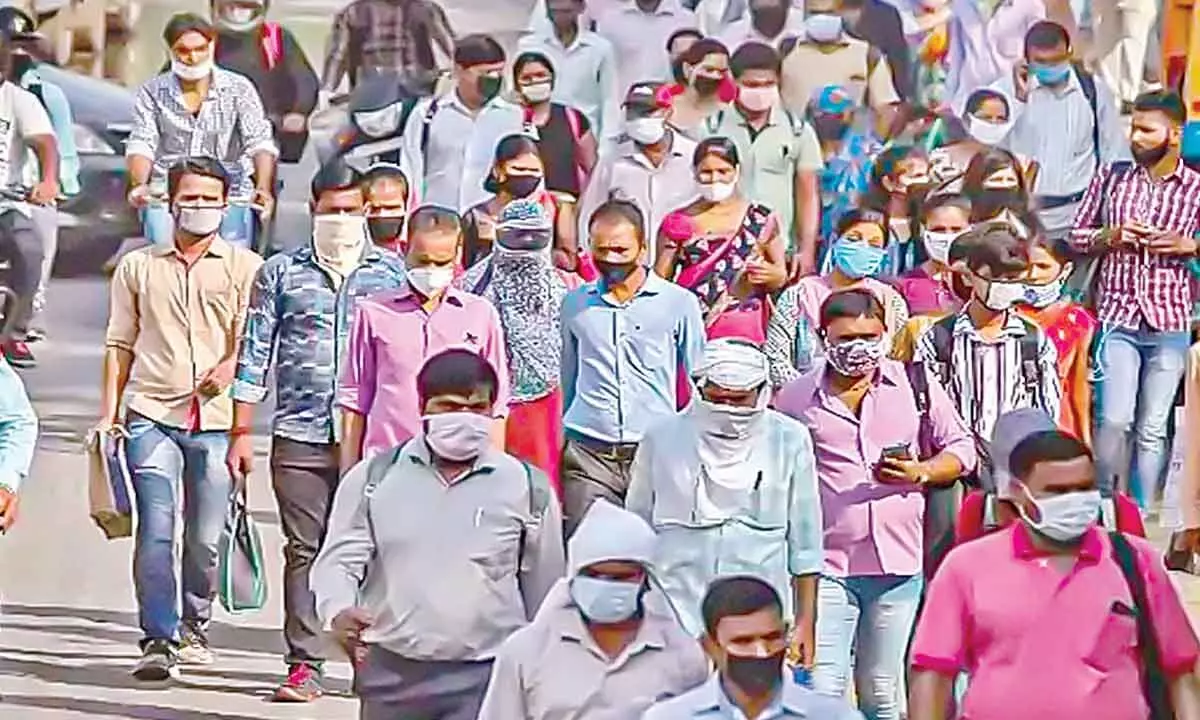India’s middle class pivotal to country’s economic growth
Goldman Sachs hails India’s ‘macro-economic resilience and lower vulnerability to external shocks’
image for illustrative purpose

International companies have struggled to grasp what constitutes India’s ‘middle class’ and craft the appropriate value propositions. Only 66 million are genuinely ‘middle income’ by global standards, while a whopping 1.16 billion are ‘low income’
The middle classes constitute a critical market for most goods and services. A sizable portion of any nation’s tax revenue is collected either directly or indirectly from this group, which also has an important role when it comes to political stability. A healthy middle class is necessary to have a healthy political democracy. A society made up of rich and poor has no mediating group, either politically or economically.
"After a better-than-expected 7.6% this fiscal, India's real GDP growth will likely moderate to 6.8% in fiscal 2025," said a Crisil India Outlook report.
The Reserve Bank of India’s GDP growth estimate for FY24 is 7%, while the International Monetary Fund (IMF) forecasts 6.7%. Goldman Sachs expects it to grow by 6.3% in 2024, because of ‘its macro-economic resilience and lower vulnerability to external shocks’.
The IMF expects India's growth to remain strong, projecting a 6.3% expansion in the financial year between April 2024 and March 2025.
At present, India's GDP size is $3.6 trillion. It is the fifth largest economy in the world, after the US, China, Japan and Germany. Crisil expects the economy to expand to $6.7 trillion by fiscal 2031.
As per World Bank definition, lower-middle income countries are those with per-capita income of $1,000-4,000, and upper-middle income countries are those with per capita income between $4,000-12,000.
The starting point for any discussion of India’s promise is, invariably, the promise of the Indian consumer. With 1.4 billion people and myriad unmet needs, the growth is driven mainly by domestic consumption and investments. Real wages are expected to grow at 4.6%, whereas disposable income will continue to grow in excess of 15%. Industries that are mature in the west are fast-growing in India: Private health insurance, for example, has almost tripled between 2015 and 2021, while consumer durables are projected to grow between 15% and 18% this year.
The size of the country’s middle class will nearly double to 61 per cent of its total population by 2047, from 31 per cent in 2020-21, as continuing political stability and economic reforms with a sustained annual growth rate varying between six and seven per cent over the next two and half decades will make the country one of the largest markets in the world.
International companies have struggled to grasp what constitutes India’s ‘middle class’ and craft the appropriate value propositions. While some analysts argue that one out of every three Indians is ‘middle class’, only 66 million are genuinely ‘middle income’ by global standards, while a whopping 1.16 billion are low income. However, many in this second group constitute a vast aspirational consuming class. This has many implications. For one, competing in India means selling at much lower price points, which in turn requires reconfiguring activities, production, and supply chains in ways that are hard for competitors to mimic.
India’s best-selling car is Wagon R, priced at $7,000 and is made by Suzuki, a company whose 41% market share in India is an outlier in the auto industry globally.
A burgeoning new source of demand growth comes from India’s urgent need for a green transition. The scale of its economic potential indicates an enormous energy demand. As the third largest energy-consuming nation, it is already fourth in the world in renewable energy installed capacity. The country has set ambitious targets: installing 500 gigawatts of renewable energy capacity, producing 5 million tons of green hydrogen annually, cutting emissions by 45%, along with a billion tons of CO2 — all by 2030.
A 2021 report by the World Economic Forum (WEF) projects 50 million net new “green economy” jobs in India — which means more consumers — and $15 trillion in economic opportunity by 2070, with $ one trillion by 2030.
By 2030, the country’s working-age population is expected to be 1.04 billion and a dependency ratio being the lowest ever at 31.2%, contributing just under a quarter of the incremental global workforce. The working-age population bulge is expected to last till 2055.
Despite impressive growth numbers at the national level, the economic benefits have been highly unequal. The top 10% of Indians hold 77% of the national wealth. Almost two persons are pushed into poverty because of health care costs alone every second. The population density — amongst the highest in the world — exacerbates the zero-sum nature of resource allocation and environmental stresses. Regional imbalances — southern and western India growing 12% faster than northern and eastern India — will magnify over time. Superimpose on this linguistic fault-lines, new inter-regional tensions could surface. Handling these will require deft management of the political economy.

